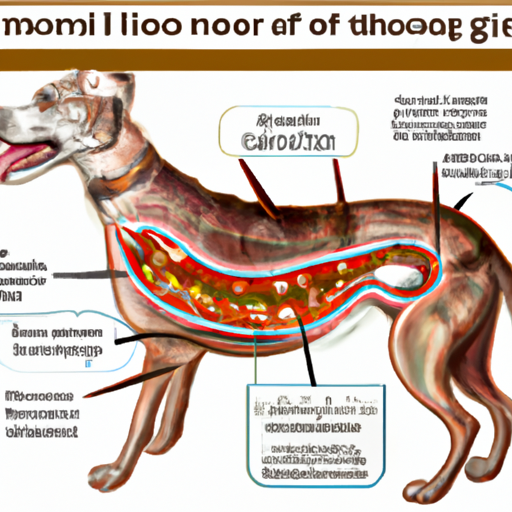Introduction
As a caregiver, you’re the first line of defense against threats to your furry friend’s health. One such threat that often lurks unseen is the presence of worms in dogs. This article aims to inform you about what these parasites look like and how to identify them, so you can act swiftly to ensure your pet’s wellbeing.
Types of Worms in Dogs
There are primarily five types of worms that commonly infect dogs:
- Heartworms
- Tapeworms
- Roundworms
- Hookworms
- Whipworms
Each parasite has a unique appearance, which we’ll discuss next.
Identifying Worms by Appearance
Heartworms
Heartworms are long, spaghetti-like worms that can reach up to a foot in length. However, they are rarely seen because they live in the heart and circulatory system. Diagnosis is typically via blood tests.
Tapeworms
Tapeworms are long, flat worms that can grow up to 20 inches long. You’ll often find segments of them in your dog’s feces, looking like grains of white rice, or around your dog’s rectal area.
Roundworms
Roundworms are long and have a spaghetti-like appearance. They are often visible in your dog’s stool or vomit.
Hookworms
Hookworms are much smaller and are not visible to the naked eye. They attach to your dog’s intestinal wall, and evidence of their presence is usually through symptoms like anemia or bloody stool.
Whipworms
Like hookworms, whipworms are usually not visible without a microscope. They live in your dog’s large intestine, causing bloody diarrhea or weight loss.
Symptoms of Worm Infestation
Now that we’ve seen what worms look like, it’s also important to know the symptoms that suggest their presence.
- Lethargy
- Diarrhea or vomiting
- Weight loss
- Changes in appetite
- Dull coat or hair loss
- Scooting or signs of discomfort
FAQ
Q: How do dogs get worms?
A: Dogs can get worms through different ways, including contact with infected feces, soil, fleas, or mosquitoes.
Q: Can humans get worms from dogs?
A: Yes, certain types of worms can be transmitted from dogs to humans, especially if hygiene practices are not maintained.
Q: What should I do if I suspect my dog has worms?
A: If you suspect your dog has worms, consult your vet immediately. They can perform tests and recommend the appropriate treatment.
Q: How can I prevent my dog from getting worms?
A: Regular deworming, good hygiene, and preventative medications can help keep worms at bay.
This information should empower you as a caregiver to detect any signs of worms in your dog. Remember, early detection and treatment are essential to keep your furry friend healthy and happy.



